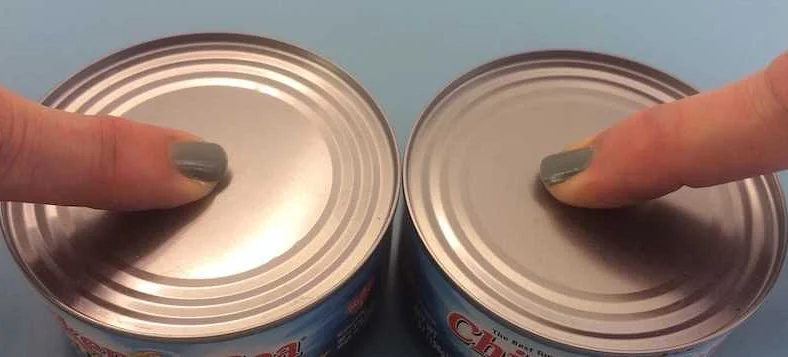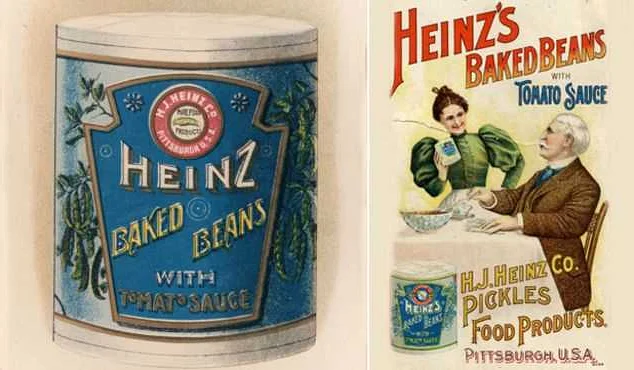A Guide to Identifying Spoiled Canned Food and Avoiding Food Poisoning
Learn how to recognize spoiled canned food by examining the can. Find out the signs to look for, such as bulging, dents, and leaks, that indicate the contents have turned into poison. Protect yourself and your family from food poisoning by knowing how to identify spoiled canned food.
When it comes to canned food, many people rely on the convenience and long shelf life that it offers. However, it’s important to be aware that not all canned food is safe to consume. In some cases, the contents can become spoiled and even poisonous, posing a serious health risk. That’s why it’s crucial to know how to identify spoiled canned food before it’s too late.
One of the first signs to look out for is the appearance of the can itself. If you notice any swelling or bulging, it’s a clear indication that the food inside may have gone bad. This could be caused by the growth of bacteria or yeast, leading to gases being produced and the can becoming pressurized. Additionally, any dents, rust, or leakage should also raise alarm bells, as they can compromise the integrity of the can and potentially contaminate the contents.
Next, pay close attention to the smell of the food when you open the can. Spoiled canned food often has an off-putting odor that is distinctly different from its normal, fresh counterpart. If you detect any sour, rotten, or foul smell, it’s best to err on the side of caution and discard the can immediately. Keep in mind that some canned foods, such as fish or certain vegetables, naturally have a strong smell, but it should never be overpoweringly unpleasant or offensive.
Finally, the appearance and texture of the contents can provide valuable clues as to whether the canned food is safe to eat. Look out for any obvious signs of discoloration, such as dark spots, mold growth, or an unnatural change in color. Similarly, if the texture appears slimy, mushy, or excessively watery, it’s a definite red flag. These visual and tactile changes can indicate bacterial or fungal contamination, making the food unfit for consumption.
In conclusion, learning how to identify poisonous canned food is essential for ensuring the safety of yourself and your loved ones. By examining the can for any abnormalities, using your sense of smell, and assessing the appearance and texture of the contents, you can make an informed decision about whether to consume the food or dispose of it. Remember, when in doubt, it’s always better to be safe than sorry.
How to Identify Poisonous Canned Food: A Step-by-Step Guide

When it comes to ensuring the safety of what you eat, being able to identify poisonous canned food is crucial. Canned food that has gone bad can cause serious illness or even lead to death if consumed. To keep yourself and your loved ones safe, follow this step-by-step guide to identify and avoid poisonous canned food.
Step 1: Inspect the can
Begin by carefully examining the can for any signs of damage or bulging. Cans that are swollen or dented could indicate the presence of harmful bacteria or toxins. If you notice any irregularities, it is best to discard the can immediately.
Step 2: Check the expiration date
Always check the expiration date printed on the can. Consuming canned food past its expiration date can put your health at risk. If the food has expired, it is safest to throw it away.
Step 3: Look for discoloration or off-putting odors
Open the can and examine the contents for any discoloration, mold growth, or unusual odors. If the food appears to be discolored or emits a foul smell, it is a strong indication that it has spoiled. Do not consume such food, as it can be toxic.
Step 4: Check for gas formation
After opening the can, pay attention to any hissing or gas formation. If you hear any unusual sounds or notice the presence of gas, it is a sign that the food has turned bad. In such cases, it is essential to discard the can.
Step 5: Consider the texture and taste
When you take a bite of the canned food, assess its texture and taste. If the food feels mushy, slimy, or has an off taste, it is an indication of spoilage. Trust your senses and avoid consuming such food.
Step 6: Store the remaining canned food properly
If you find that the canned food is safe to consume, ensure that you store the remaining contents properly. Transfer any leftovers to a clean, airtight container and refrigerate them promptly. This will help maintain the freshness and prevent the growth of harmful bacteria.
By following these step-by-step guidelines, you can confidently identify and avoid poisonous canned food. Remember, when in doubt, it is always better to err on the side of caution and discard the food. Your health and well-being are worth it!
Understanding the Dangers of Eating Spoiled Canned Food

Eating spoiled canned food can have serious health consequences and should be avoided at all costs. While canned food is generally considered safe due to its preservation methods, it is still susceptible to spoilage if not stored or processed correctly.
When food spoils, it becomes contaminated with bacteria, mold, or other harmful microorganisms. These organisms can produce toxins that are harmful to the human body. Consuming spoiled canned food can lead to food poisoning, which can cause symptoms such as nausea, vomiting, diarrhea, and abdominal pain.
One of the main dangers of eating spoiled canned food is botulism. Botulism is a rare but serious illness caused by a toxin produced by the bacterium Clostridium botulinum. This bacterium can grow in canned foods with low acidity levels and without proper sterilization. If ingested, the botulinum toxin can cause muscle weakness, difficulty swallowing, blurred vision, and even paralysis.
Another danger is the presence of mold. Mold can grow on spoiled canned food, especially if the can’s seal has been compromised. Eating mold-contaminated food can lead to allergic reactions, respiratory problems, and even toxic effects on the liver and kidneys.
It is crucial to be able to identify the signs of spoiled canned food and discard it immediately. Look for bulging or dented cans, foul odors, unusual colors, and signs of leakage. Additionally, pay attention to the texture and appearance of the food inside the can. If it appears mushy, discolored, or has an off-putting smell, it is best to throw it away.
In conclusion, consuming spoiled canned food poses significant health risks. It is essential to understand the dangers associated with eating such food and know how to identify the signs of spoilage. By being vigilant and cautious, you can protect yourself and your loved ones from the potential hazards of consuming spoiled canned food.
Checking for Physical Signs of Spoilage
When inspecting canned food for potential spoilage, it’s important to examine for any physical signs that may indicate deterioration. Here are some key factors to look out for:
1. Swollen or bulging cans: If a can appears to be swollen or bulging, it is a clear indication that the food inside has spoiled. This is usually caused by the growth of bacteria and the release of gases produced as a result. It’s crucial to discard any cans with this physical deformity, as the contents may be contaminated and hazardous to consume.
2. Dented or damaged cans: Cans with dents, punctures, or other forms of damage can compromise the airtight seal, allowing the entry of air and bacteria. Inspect each can carefully, and if you notice any severe damage that affects the integrity of the packaging, it’s best to err on the side of caution and discard it.
3. Leaking or rusty cans: Leaks or rust stains on the can are clear indicators of spoilage. Leaking cans can be a sign of microbial activity and contamination, while rust stains may suggest that the can’s protective coating has been compromised. It’s essential to avoid consuming any canned food that shows these signs of deterioration.
4. Mold or unusual growth: Any presence of mold, fungus, or other unusual growth on the can, lid, or food itself should be taken as a sign of spoilage. Mold can release harmful toxins and pose serious health risks if ingested. If you encounter any signs of mold or unusual growth, it’s advisable to discard the affected can immediately.
Note: It’s essential to handle potentially spoiled canned food with care, as it may contain harmful bacteria or toxins. Always follow proper disposal protocols and avoid consuming any suspicious food.
Detecting Changes in Texture and Color
When inspecting canned food for potential spoilage, it is important to pay attention to changes in texture and color. These visual cues can often indicate that the contents of the can have gone bad and should not be consumed. Here are some tips to help you detect changes in texture and color:
| Texture:
| Color:
|
Remember, trusting your senses is crucial when it comes to identifying poisonous canned food. If you notice any significant changes in texture or color, it is best to err on the side of caution and discard the can.